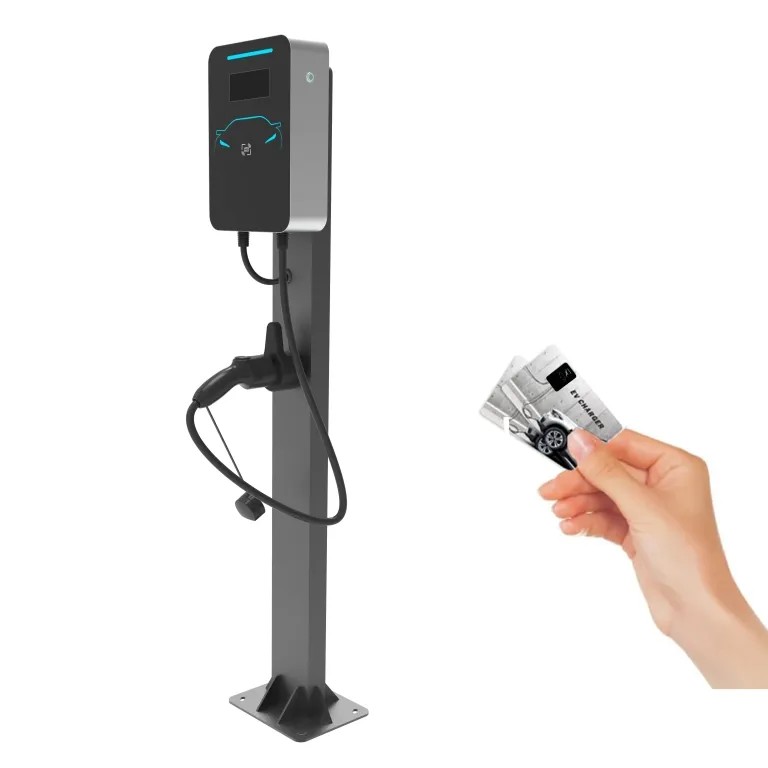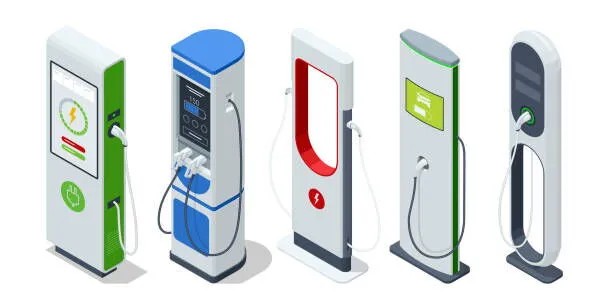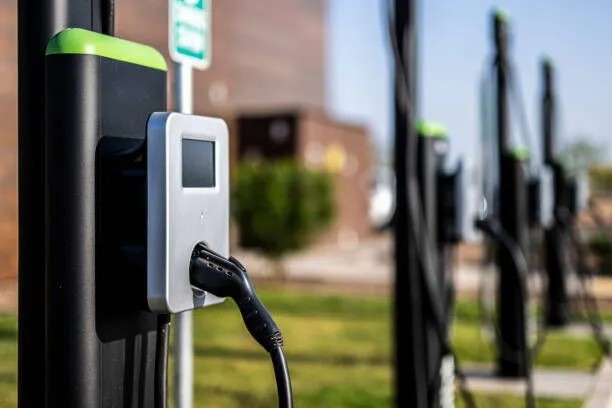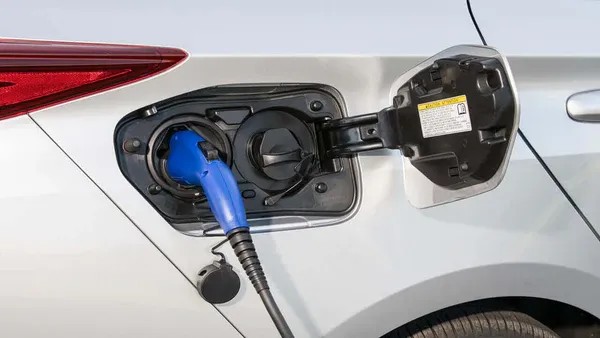Understanding RFID in EV Chargers: What It Is and Why It Matters

Strong 8k brings an ultra-HD IPTV experience to your living room and your pocket.
Introduction: Embracing Smart Charging Technologies
As a leading EV charger manufacturer in China, LiCB Charge offers reliable AC and DC electric vehicle charging stations along with comprehensive charging solutions.
As electric vehicles (EVs) continue to revolutionize the global automotive landscape, the need for intelligent and user-friendly charging infrastructure is more pressing than ever. Among the many innovations enhancing the EV charging experience, Radio Frequency Identification (RFID) has emerged as one of the most convenient and widely adopted technologies for both public and workplace charging.
Whether you're a seasoned EV owner or just starting your journey toward electric mobility, understanding RFID’s role in EV charging can help you make informed decisions and enjoy a smoother charging experience. This article explores the basics of RFID, how it functions within EV charging systems, and why it remains a cornerstone of modern EV infrastructure.
What Is RFID and How Does It Work in EV Charging?
RFID Explained
RFID, or Radio-Frequency Identification, is a wireless technology that uses electromagnetic fields to identify and authenticate tags attached to objects. In EV charging, an RFID card functions as a contactless key—allowing drivers to start or stop a charging session by simply tapping their card on the charger’s reader.
These RFID tags (often in the form of cards, key fobs, or stickers) contain unique identifiers linked to the user's account. When scanned, the charger verifies the user's credentials and activates the charging session, billing accordingly.
A Real-World Analogy
Think of using an RFID card like making a contactless payment with your credit card—only instead of buying a coffee, you’re powering up your vehicle.
This seamless and secure process eliminates the need for mobile apps, physical buttons, or internet connections, providing a straightforward user experience.
Where Are RFID Cards Used?
Public Charging Networks
RFID cards are widely used across public EV charging networks, including:
Highway service areas
Shopping centers and retail outlets
Public parking garages
City centers
Corporate campuses and business parks
These sites may offer different charging speeds such as:
Standard (AC): 7 kW
Fast (AC): 22 kW
Rapid (DC): 50 kW and above
RFID cards provide a consistent and accessible method to use these stations, regardless of provider or location.
Private and Workplace Charging
While less common in residential settings, RFID is useful in workplaces or multi-user environments. Fleet operators and employers may issue RFID cards to employees to manage access, monitor usage, and allocate costs efficiently.
Why RFID Is Popular in EV Charging
1. Seamless Access Across Networks
RFID systems support interoperability across multiple charging providers. With roaming agreements in place, a single RFID card can unlock thousands of chargers across different networks—eliminating the need for multiple apps or accounts.
2. Durable and Reliable Technology
Unlike magnetic stripe or chip cards, RFID cards don’t require physical contact, reducing wear and tear. They’re well-suited for outdoor use, often integrated into weatherproof charging units.
3. Streamlined Authentication Process
Using an RFID card is as easy as:
Tapping the card on the charger’s reader
Automatic user verification and session start
Tapping again to end the session
Usage and billing data recorded to the user’s account
4. Transparent Billing and Monitoring
Each RFID card is linked to a user account, allowing individuals and businesses to track energy consumption, charging history, and costs via web portals or mobile apps.
Benefits of RFID in EV Charging
Convenience
No need to pull out your phone or search for apps—just tap and charge. Especially handy in areas with weak signal or during inclement weather.
Enhanced Security
Every RFID card is uniquely linked to a verified account, helping prevent unauthorized access or misuse.
Cross-Network Compatibility
Thanks to roaming agreements, many RFID cards work across numerous networks, making them ideal for frequent travelers or long-distance drivers.
Clear Cost Control
RFID charging provides transparent pricing—whether billed per session, minute, or kWh—with digital records available anytime.
Multi-User Management
Perfect for fleet managers or shared charging spaces, RFID allows administrators to assign access, monitor activity, and enforce restrictions.
RFID Frequencies Used in EV Charging
RFID operates across several frequency bands, but High Frequency (HF) is most commonly used in EV applications:
Low Frequency (LF) – 125/134.2 kHz: Limited to short-range uses like pet tracking or basic access control.
High Frequency (HF) – 13.56 MHz: Ideal for EV charging—offering a balance of range, speed, and security. Complies with ISO/IEC 14443 (used in transit cards and e-passports).
Ultra-High Frequency (UHF) – 868–956 MHz: Used in logistics and warehouse inventory systems; uncommon in EV charging.
Microwave Frequency – 2.45 GHz: Reserved for high-speed, specialized applications; not used in EV infrastructure.
Challenges and Limitations
While RFID offers many benefits, there are a few caveats:
Limited network coverage: Not all charging networks support RFID; some rely solely on mobile apps or QR code authentication.
Roaming restrictions: Not every card works everywhere—roaming agreements vary by provider and region.
Lost or stolen cards: A misplaced card could be misused if not quickly deactivated, though protections are often in place.
To address these concerns, many networks now offer hybrid solutions that combine RFID with app-based control and customer support.
The Future of RFID in EV Charging
As charging infrastructure evolves, RFID remains an essential tool—especially in regions with spotty mobile coverage or where speed and reliability are paramount.
Emerging Alternatives Include:
Plug & Charge (ISO 15118): Enables automatic authentication between EV and charger—no card or app needed.
NFC-enabled smartphones: Use your phone like an RFID card to tap and charge.
Biometric systems: Face or fingerprint recognition could offer secure, hands-free authentication in future high-tech stations.
Despite these advancements, RFID continues to serve millions of EV users globally with its proven simplicity and effectiveness.
Conclusion: RFID's Enduring Role in EV Charging
As the shift to electric vehicles accelerates, the supporting infrastructure must be secure, easy to use, and universally accessible. RFID technology meets all of these needs—making EV charging faster, safer, and more convenient.
Whether for individual drivers or large-scale fleet operators, RFID remains a dependable solution that streamlines access, ensures accountability, and enhances the overall EV experience. While future innovations will add new layers of convenience, RFID is likely to stay a foundational piece of the EV charging ecosystem for years to come.
Know more about Google SEO Directory
Note: IndiBlogHub features both user-submitted and editorial content. We do not verify third-party contributions. Read our Disclaimer and Privacy Policyfor details.







